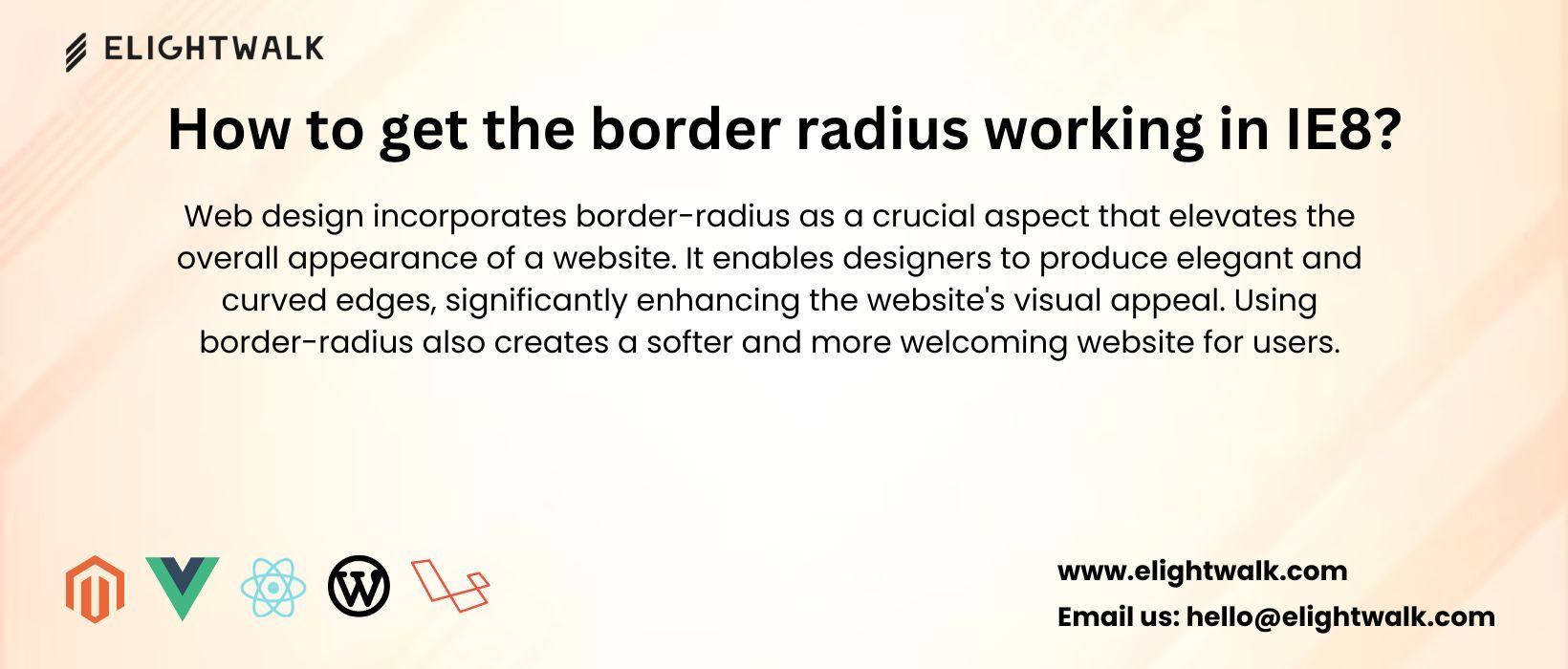Web design incorporates border-radius as a crucial aspect that elevates the overall appearance of a website. It enables designers to produce elegant and curved edges, significantly enhancing the website's visual appeal. Using border-radius also creates a softer and more welcoming website for users.
Understanding the issue:
Explanation of how border-radius works in modern browsers: This essay aims to shed light on the compatibility issues that arise when using outdated browsers like Internet Explorer 8. One of the main issues users face is the need for more support for modern CSS properties, such as border-radius. In modern browsers, border-radius allows designers to create rounded corners on elements, but in IE8, this property is not supported. Using an outdated browser may cause functionality problems for users and result in a less attractive website appearance.
Purpose of the article
To make border-radius work in IE8, you can follow these steps in simple language:
One way to get border-radius working in IE8 is using a JavaScript library like CSS3PIE. This library enables CSS3 properties, including border-radius, to work in older versions of Internet Explorer. You must include the library file in your HTML code and apply the CSS styles accordingly.
Another approach is to create rounded corner images using image editing tools. You can design images with rounded corners and then set them as backgrounds for the desired elements on your web page. This way, it will appear like the corners have a border-radius effect.
If achieving a border-radius in IE8 is not critical for your website's functionality or design, you can let it gracefully degrade. This means that in IE8, the corners will appear square instead of rounded. The remaining parts of the website will continue to work correctly, and users will not face any significant problems.



